"Never
underestimate the power of a small group of people to change
the world.
In fact it is the only way it ever has." Margaret
Mead
The
Pan African Union
.....
The idea, in sum, is
simple, and has in fact been attempted both partially and
poorly in various ways during the past century or so.
What I am proposing however is something very different
and it can be quite successful, meaningful, and open the
way to make a new life possible for the hundreds of
millions of Africans. It involves providing everyone on
the continent access to full suffrage and the ability to
have their voices heard by their governments, the
wealthy, the corporate and transnational entities that
currently hold sway and relieve the continent of the
horrific legacy of colonialism, conquest, slavery and the
dehumanizing effects of capitalism, religious
intolerance, and similar plagues.
....
Although the idea
originally concerned the nations of sub-Saharan Africa,
the problems of post colonialism are nearly universal in
Africa. I, therefore, thought it best that a continent
wide approach be the goal, at its heart there are two
ideas. The
first, iVote, is described on the page this link takes
you to. The
second part is the ultimate goal of redrawing all the
current national borders of Africa to reflect the will,
the desire, the needs of all of its many diverse
peoples.
....
Although the
process calls for the African nations to reorganize
themselves politically, first by forming a transnational
continent-wide association or union and although I know
The Organization of African Unity already exists, what I
propose goes much farther than that, ultimately, creating
a much more integrated polity than even the European
Union.
.....
The key to will be
including, integrating, and enhancing the role of the
traditional social networks of the continent, the First
Nations of Africa, or FAN.
But
why?
.....
This continent-wide
effort would redress the disconnect of the current
political systems from that of the FAN. Many difficulties
current on the continent are a direct result of both the
colonial and post colonial periods. The colonial rulers
and their territorial arrangements had little
relationship to the traditional territories of the FAN.
During the centuries long occupation, the chaotic rule
and rampant racist violence, the role FAN in a given
person's life became greatly diminished in import and
practicality. One of the more damaging results of the
colonial and post-colonial periods were the minimization
of the ancient, traditional social orders that once were
the basis for self identity. This disconnect continued
during the post colonial era when the role of FAN was
subsumed in the independence movements that swept
colonialism off the continent but which did not create
support for the FAN. There was also the concomitant onset
of the so called Cold War. All these things, I believe,
exacerbated every others social problem. Compounding all
that was the international interests who benefited from
corrupting Africa's post colonial governments, surrogate
wars , and the seemingly unending influence of foreign
militaries, philanthropies, NGOs, philosophies,
institutions, banks, and a raft of other world
organizations, during the decades long cold war. These
influences did, overall, delegitimized the FAN,
impoverish their peoples, and made it nearly impossible
for those living on the continent to prosper or for their
societies to evolve as they might wish.
....
While this may be
oversimplifying things, surely the trends of history
indicate that global systems have not been at all kind to
the continent.
The
idea, its Challenges and the
Process!
....
The essence of the
idea then is to provide a deeper, more intimate,
connection between the governing bodies on the continent
of Africa and the people who live there. To do that I
propose a revival of Africa's First Nations and for them
to play a governing role in a continent wide system,
which will provide a new social order.
.....
In this regard the
first, and perhaps most difficult challenge therefore,
will be rethinking and then adjusting the current borders
in order to facilitate the full integration,
representation, and participation of the FAN within each
of the national governments on the continent.
.....
I envision a system
modeled after that of England where where the current
political parties would have a role roughly equivalent to
the House of Commons; while First Nations would be
represented in a manner, perhaps, roughly parallel to
that of the House of Lords with one important difference
this portion of the legislative body would also be
organized as the US Senate is, that is to each first
nation, or tribe, would have a set number of persons
persons representing them, each tribe would make that
determination on their own. Once the African Union is
established the first goal would be to fully reorganize
the territories allowing borders to evolve to become
increasingly porous and eventually transparent, as has
been happening in the European Union.
.....
Overall, the goal
would be to connect the citizen to the governmental
structures in two ways, via their their First Nation
status as well as via political parties.
.....
The advantages would
be immense. Africa could begin a recovery process from
its colonial legacies, garner an important voice in world
affairs, protect itself from foreign powers, their
intrigues, greed and post colonial
infestations.
But
what do others think?
(A)
These first comments have been harvested from
the various websites attributed in the links.
The first comment is found at the following
link: http://theconversation.com/sobukwes-pan-africanist-dream-an-elusive-idea-that-refuses-to-die-52601
Is Africa really for Africans? American
commissioner to Africa and abolitionist
Martin
Delany asked this question a
century and a half ago following his sojourn
in Africa and Europe.
Attempts to answer it spawned
pan-Africanism - an idea that refuses to die.
This question is asked in memory of South
African leader Robert
Mangaliso Sobukwe, a doyen of
pan-Africanism who died in February 1978.
What became of Sobukwe is a consequence of a
myriad of factors, starting from his days
at Healdtown
Comprehensive School. A speech he
made as head boy at the school emphasized
cooperation between blacks and whites,
demonstrating his sense of awareness of the
issue of race at a young age.
Such awareness evolved into an ideological
posture, nurtured and refined by many factors
that spawned his Africanist orientation. It
was at Fort Hare, a university from which a
great many African leaders graduated, where
much of this happened. His study of Native
Administration as a subject and interaction
with a lecturer who taught it, Cecil Ntloko,
sharpened his political consciousness.
To these add the pursuit to forge synergy of
African people's struggles against
colonialism as institutionalized in the
All-African Convention of 1935; his interest
in African politics; and John Galsworthy's
play titled Strife - a story of "A
struggle between Labour and
Capital"
While a member of the African National
Congress (ANC), Sobukwe embraced its Youth
League's definition of African nationalism
that emerged during the leadership
of Anton
Lembede. It was at odds with the
mother body.
B)
The second set of comments come from
https://blackpast.org/1963-haile-selassie-towards-african-unity
On May 25, 1963 the Organization for
African Unity (OAU) was established with a
permanent headquarters in Addis Ababa,
Ethiopia. Haile Selassie, Emperor of
Ethiopia, was selected as the first President
of the OAU. His acceptance speech
appears below.
"This is indeed a momentous and historic
day for Africa and for all Africans. We stand
today on the stage of world affairs before
the audience of world opinion. We have come
together to assert our role in the direction
of world affairs and to discharge our duty to
the great continent whose 250 million people
we lead."
C)
The third salient quote comes from
http://www.jpanafrican.org/docs/vol6no6/6.6-Felix.pdf
The search for Africa's political unity has
been one of the underlying ideas drawn from
Pan-Africanism for several decades. Besides
political leaders such as Sekou Toure and
Modibo Keita with similar ideas on
continental unity, Kwame Nkrumah was the
central figure who vigorously championed the
cause for Africa's political unity.
D)
And now for the
final arguments in favor of this cause. The
following are irrefutable, graphic, images
which demonstrably proves the point that a
reorganization of Africa is long overdue. Why
let the effects of horrific, genocidal
colonization persist? Why keep the First
Nations of this bountiful, beautiful, and
prosperous continent forever enthralled to
the slavery of the past? These maps all
relate to the issues outlined above and so
supports the proposition this page
suggests.
Now, to drive home the point, in a truly
terrible way and so show the need for making
use of this idea, I offer a small story. I
made a survey of historical atlases on line.
I chose ones with animated maps depicting he
rise of civilization, nation states, and so
forth using colorful areas that would come,
grow, and go over the course of millennia. I
was inspired and came up with a kind of
haiku, which is as god awful as it is brief,
to wit:
Historical
atlas
Flip pages; each pixels change in tint
Warfare's sanguine hint

See
a Larger Image
Below
is a simpler line drawing of African First
Nations' territorial regions.

See
a Larger Image
This
is a similar map, crafted in 1959, the image, in
this case, is the message.
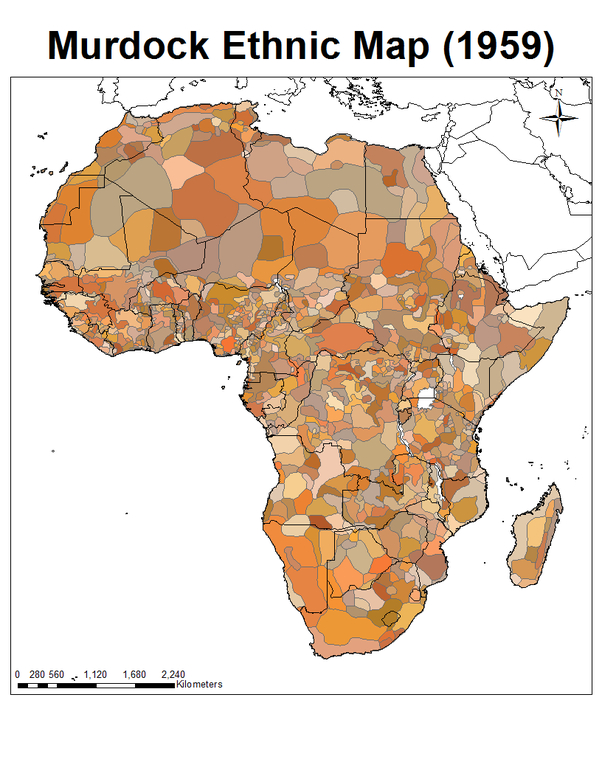
See
a Larger Image
Below
is a more colorful version of the map above
.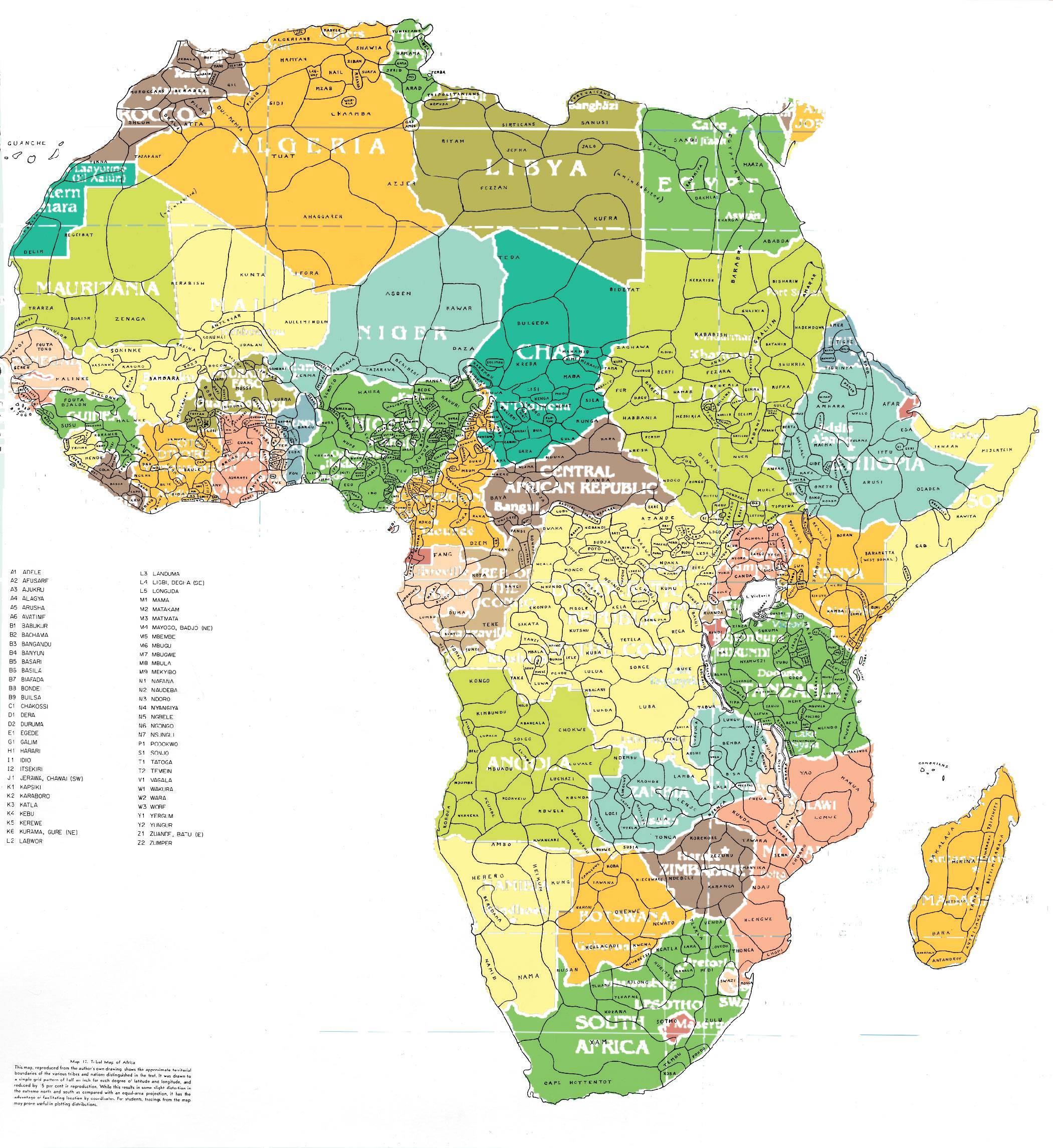
See
a Larger Image
Below
is a map of the language families of Africa.
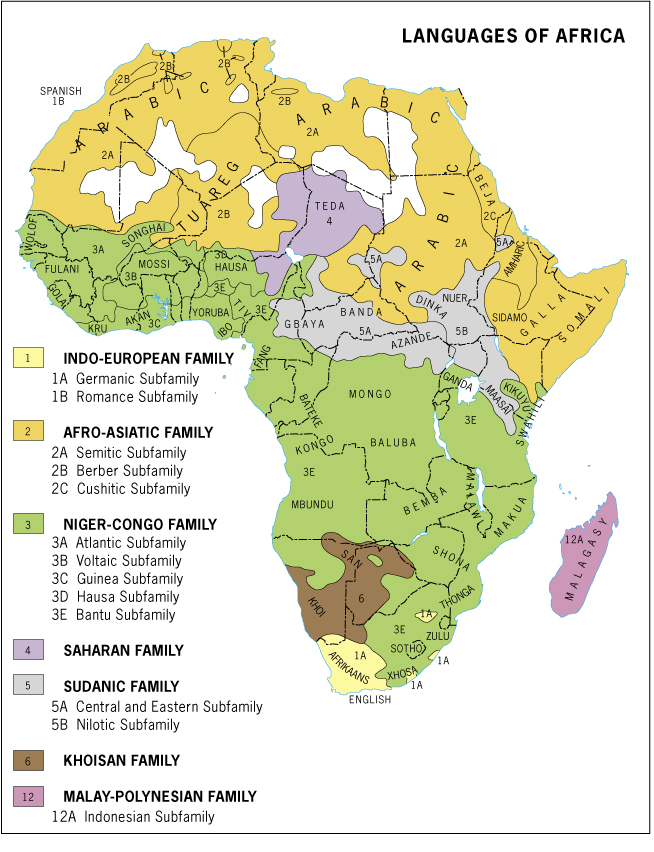
See
a Larger Image
Below
is a map of the Classical African First
Nations.
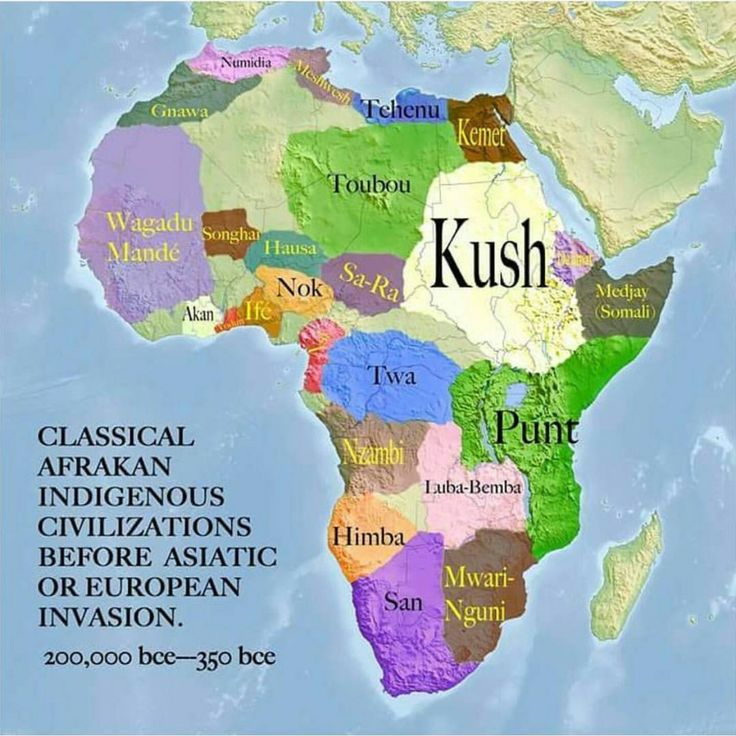
See
a Larger Image
Yet
another image hinting at the rich diversity of
the continent
making it a perfect place for the largest
democratic polity in the world!
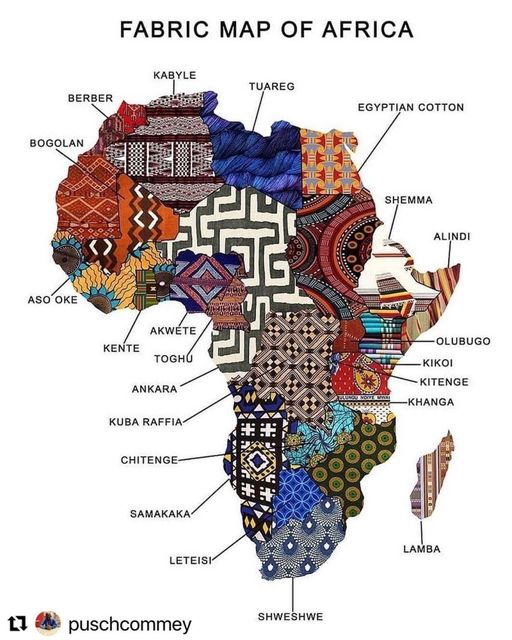
See
a Larger Image
|
....
I am
intent upon problem solving and, in association with
Creative
Ideas Consulting of San
Francisco,
I am
embarking on another means of affecting the warp and woof
of our social fabric so as to promote a healthy change in
the evolution of the human civilization or community on
Earth.
.....
Much
more is coming but this note provides notice that help is
on the way, in the meantime, to make inquiries, see the
following link:
Email
Dan!
|